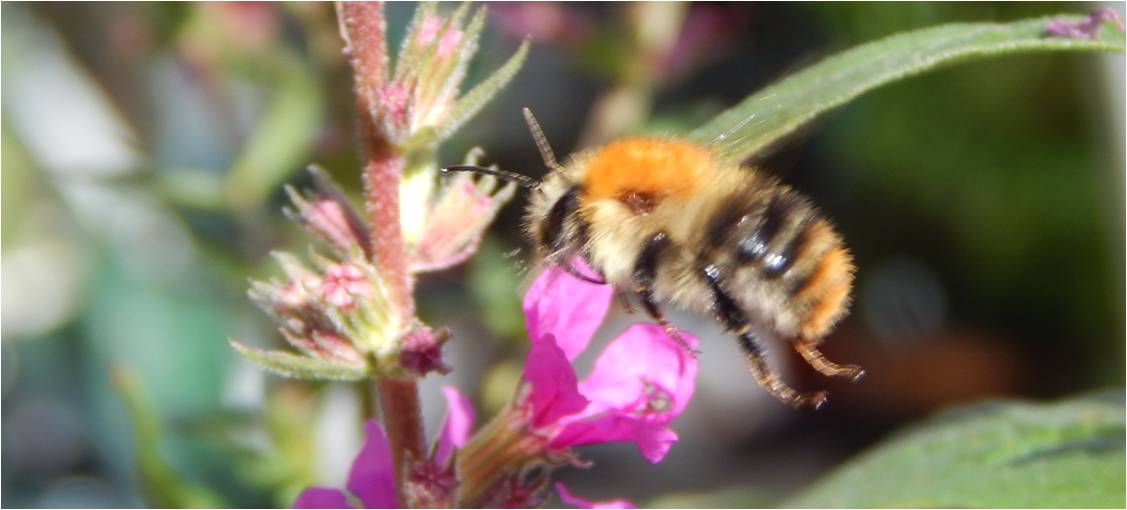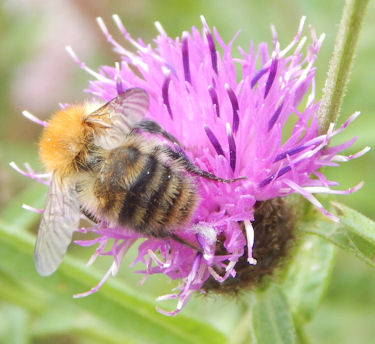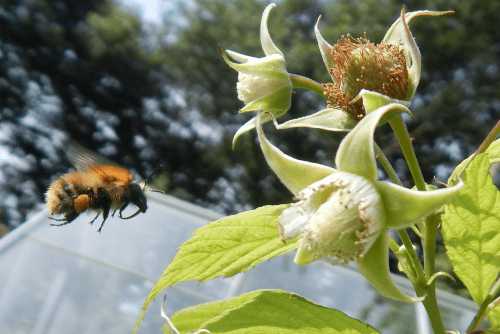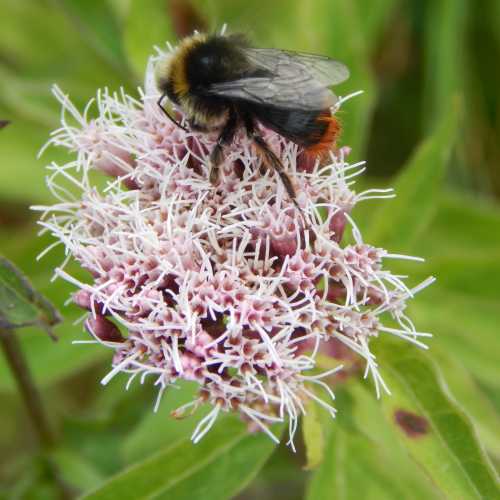Bombus pascuorum
- The Common Carder Bumble Bee
The common carder bumble bee, Bombus pascuorum, is widespread in the UK. It is one of the later bumble bees to appear, but has a long foraging season and is a useful pollinator of autumn crops, such as autumn raspberries.
Identification of Bombus pascuorum
Queens are relatively small in comparison with other bumble bee species, at about 17mm in length. They have gingery bodies, often with
black/dark hairs, and usually ginger tufts of hair on the face.
Workers have similar colouring to queens, and can be very small. Males have yellow hairs on the face, with some black ones. The face is longer in this species than it is wide, and it is a long tongued species. This species is very easily confused with the other carder bees, B. humilis and B. muscorum.
 Common carder bumble bee in flight.
Common carder bumble bee in flight.Bombus pascuorum lifecycle and colony
Queens emerge from late March onwards. They search for nest sites over tussocky
grassland, where they prefer to nest, along with the edges of hedgerows and
near shrubs. Like other carder bees,
they ‘construct’ their nests from grasses and moss, ‘woven’ together.
Workers appear from April onwards, and can be seen foraging
through to October – even November during mild years and food availability
permitting. Males and daughter queens
emerge from June. Colonies of between
100 – 200 are reported.
 Common carder bumble bee foraging on knapweed.
Common carder bumble bee foraging on knapweed.Foraging
Bombus pascuorum forage on comfrey, lavender, bugle, rosemary, wallflower, red
campion, bergamot, geranium cultivars, horse chestnut, marsh and hedgewoundworts, sedum,
raspberry, bramble, Himalayan balsam, knapweed, devil’s-bit scabious, clovers,
meadow vetchling and bird’s foot trefoil.
 Common carder bumble bee flying toward raspberry flowers.
Common carder bumble bee flying toward raspberry flowers.Parasites and Predators
This species is host to the cuckoo bumble bee B. campestris, and may be parasitized by the nematode Sphaerularia bombi. This species may also be attacked by the conopid fly, Physocephala rufipes.
If you found this page helpful or interesting, I'd really be grateful if you would share it with others - if not this page, perhaps another, such as Gardening For Bees.
Thank you so much :) .
